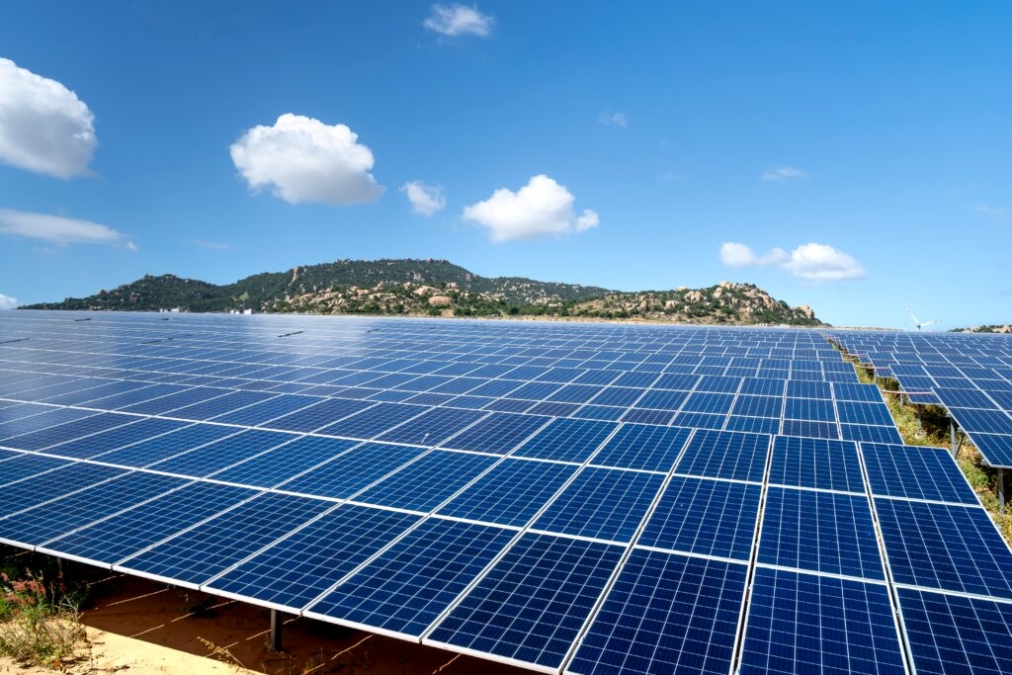Throwing some “light” on India’s tryst with solar power
Now that we’ve got the basics of what the NAPCC (National Action Plan on Climate Change) is all about, let’s move on to the specifics, shall we?
The Solar Dream
We’re talking about the National Solar Mission, also known as the JNNSM (Jawaharlal Nehru National Solar Mission) launched in 2010. It was set up to make a cleaner source of energy more accessible and affordable in the form of solar power, eventually achieving grid parity.
Situated in the tropics, India’s scope to use solar energy and awaken the dark, power-stricken parts of the country is very high. This mission aims to unlock that potential.
Goals and ambitions
India envisions itself as an industry leader in solar power. To achieve the same, the mission has been set across 3 phases wherein targets are evaluated at the end of each phase and revised accordingly. They are:
Phase 1 (2010 – 2013)
Phase 2 (2014 – 2017)
Phase 3 (2017 – 2022)
Some of the overall targets that the mission sets to achieve by 2022 include:
● Setting a framework to install 20,000 MW of grid-connected solar power
(1000 MW by 2013, 4000 MW by 2017, respectively)
● 20 million solar lighting systems available for India’s rural population
● Increase solar thermal production for indigenous purposes
● Achieve 20 million sq. meters worth of solar thermal collector
(devices that can collect heat by trapping sunlight) by area [1].
The exact estimates can be viewed below [2]:
| Application Segment 1. Solar Collectors 2. Off-grid solar applications 3. Utility grid power, including roof top |
|---|
Phase 1 target
7 million sq.meters
200 MW
1,000-2000 MW
Phase 2 target
15 million sq.meters
1,000 MW
4,000-10,000 MW
Phase 3 target
20 million sq.meters
2,000 MW
20,000 MW
Can you feel the heat?
National Solar Mission progess check
Some good news – Having surpassed its target of reaching 20,000 MW of grid power earlier than predicted, India has now revised its goal to 100 GW by 2022. For perspective, this is 5 times the originally set target [3]. 40 GW has already been achieved (as of March 2021).
As per the Ministry of New and Renewable Energy, “a target of 2000 MWp was kept for off-grid solar PV applications. Under the Phase-I of the Mission from 2010-13, a target of 200 MWp was kept against which 253 MWp was sanctioned and under Phase-II from 2013 – 17, a target of 500 MWp was kept against which 713 MWp has been sanctioned. Under Phase-III, a target of 118 MW has been kept.” Other solar applications include over 2,50,000 solar pumps, 8,00,000 street lights, 7 million solar lanterns and 17 million home lights [4].
State-wise, Kerala, Rajasthan, Gujarat, Telangana and Tamil Nadu are reigning at the top with installed capacity ranging from 7,000 MW – 4,000 MW. On the negative, low – performers include the North-East, Bihar, Jharkhand, Odisha, J&K & Uttarakhand (the lowest at negligible installed capacity) The real-time graph of which can be viewed here
One last thing –Ever heard of solar parks? We have the largest one in the country, in the making as you read this. Set in Kutch, it is said to have a capacity of 4750 MW [5]. The largest ones till before this – the Bhadla plant in Rajasthan having a capacity of 2250 MW and the Pavagada plant in Karnataka with a capacity of 2050 MW are now fully operational [6] [7]. But, there are concerns too. The Charanka solar park, also in Gujarat, set out to be the first in the country but failed to deliver many promises, not even having developed roads, hospitals or a school. Few are employed and in the past 10 years, not much has changed. Fingers crossed history doesn’t repeat itself? [8].
P.S. – India has managed to surpass Italy, achieving the 5th global position in installing solar power.
Just saying.What next?
A lot has been done, a lot needs to be done. The big picture looks great (seriously, applaud) but it leaves us with a few questions. Will India hit the target of reaching 100 GW in less than 2 years? Will the solar park learn from its counterpart’s mistakes? Will the rural side finally see light?
Only time will tell.Do you think India could successfully achieve 100GW solar capacity targets at this pace? Write to us and let us know on info@carbonmandal.com!
Willing to take action and grow your business? Connect with our Carbon Mandal sustainability professionals Click here
List of References
- Mission Document, Solar Energy Corporation of India Ltd.. Accessed August 30, 2021.
- Mission Document, Solar Energy Corporation of India Ltd.. Accessed August 30, 2021.
- Jawaharlal Nehru National Solar Mission (Phase I, II and III), 2021, IEA. Accessed August 30, 2021.
- Solar Energy, Ministry of New and Renewable Energy. Accessed September 1, 2021.
- Press Release 2021. NTPC to set up India’s single largest solar park at Rann of Kutch, NTPC.. Accessed September 02, 2021.
- Ranjan.R, 2019. World’s Largest Solar Park at Karnataka’s Pavagada is Now Fully Operational, Mercom India. Accessed September 05, 2021.
- Sirur.S, 2021. How Gujarat is building ‘world’s largest’ solar power park, close to its border with Pakistan, The Print. Accessed September 02, 2021.
- Sanjay.P, 2020. With 2,245 MW of Commissioned Solar Projects, World’s Largest Solar Park is Now at Bhadla, Mercom India. Accessed September 05, 2021.

